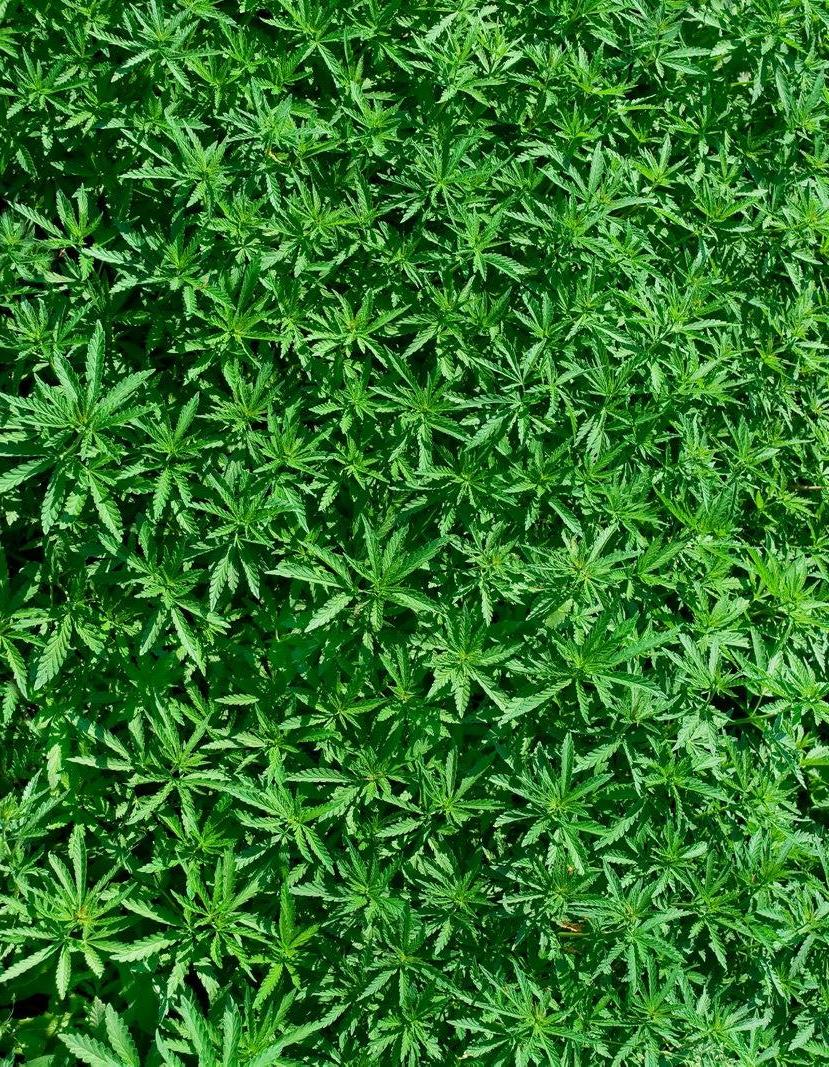
3 minute read
Cannabis in Latin America: the bloom of an industry under a new paradigm. Gerardo Garza Villarreal et al.
With the legalization of Cannabis and hemp cultivation in several countries of Latin América occurring at frantic speed, it is important to discuss the impact of this type of cultivation on the environment; currently, in other productive regions, indoor cultivation has been privileged with the elaboration of products considered as Premium, which may result in both economic and environmental high costs.
In some states of the US such as Colorado, it has been observed that the indoor Cannabis cultivation sector pollutes even more than the coal industry. According to greenhouse effect gas emission studies on Cannabis production, 1 kg of indoorcultivated dried Cannabis flower delivers between 2,283 and 5,184 Kg of CO2. This significant variation in numbers is directly attributed to the different power sources used in the cultivation.
Advertisement
It is recommended to invest in sustainable power sources to reduce the carbon footprint since CO2 discharges caused by indoor farming systems can be reduced by 42% using greenhouse systems and up to 96% implementing open-field production systems.
Reducing the carbon footprint is not the only issue to resolve in order to achieve a sustainable industry. Besides measuring and mitigating the polluting gas discharges, it is critical to maintaining the Sustainable Development Global Objectives, raised in the United Nations’ 2030 Agenda as a comprehensive reference in the plotting of the regulatory strategy for this new industry.
The transition towards a bio-economy will be the path to achieve the change of structural paradigm in Latin America and the rest of the world, needed to fulfill the Sustainable Development Global Objectives on schedule. This transition must be driven by efficient agricultural and rural development policies aimed to intelligently specialize lands.
It is expected that the regulation of sustainable Cannabis and hemp production works as an environmental, social, and economic-change vehicle, developing replicable models that facilitate the transition for these and other types of cultivations, as well as the inclusion of productive communities that require a deep process of social structure renovation and repair of damage caused by the prohibition.
To this effect, regulations and standards must be adapted to the new market regions, considering the geographic conditions of countries near the equator, not only for the profit, but for the regulatory challenges facing the plant’s farming under enhanced ideal conditions, such as hemp cultivated in the open field that, under direct, consistent, and prolonged sunlight exposure trends to increase the levels of THC, which, in case of reducing the allowed limit of 1% in order to standardize it with other regions closer to the poles, where the allowed limit is kept at 0.3%, would cause the loss and waste of great amounts of biomass. Only in 2019, near 60% of the United States crops were classified as “hot hemp” and processed to be wasted. We face the opportunity to design parameters adjusted to the reality of Latin America, which permit that social justice works hand in hand with sciences to fulfill a better future for the agricultural sector and the individuals involved in this industry, who participate in the share of profit, food, and environmental recovery.
Supporting references:
1 - The greenhouse gas emissions of indoor cannabis production in the United States Hailey M. Summers, Evan Sproul & Jason C. Quinn https://doi.org/10.1038/s41893-021-00691-w 2 - Bioeconomía en América Latina y el Caribe Contexto global y regional y perspectivas Adrián G. Rodríguez Andrés O. Mondaini Maureen A. Hitschfeld https://www.cepal.org/es/publicaciones/42427-bioeconomiaamerica-latina-caribe-contexto-global-regional-perspectivas 3 - Naciones Unidas Objetivos y metas de desarrollo sostenible: 17 objetivos para transformar nuestro mundo https://www.un.org/sustainabledevelopment/es/sustainabledevelopment-goals/ 4 - Economic Viability of Industrial Hemp in the United States: A Review of State Pilot Programs ers.usda.gov/webdocs/publications/95930/eib-217.pdf 5 - Dr. Ethan Russo 1% THC Limit for Hemp World-renowned neurologist and cannabis and endocannabinoid scientist explains why increasing hemp’s allowable THC content makes sense. https://www.hempgrower.com/article/dr-ethan-russo-1-is-ascientifically-defensible-thc-limit-for-hemp/


Ana Lucía González, Allegra Piaccentini, Francisco de Landero and Gerardo Garza
Sustainable Development Committee – Cannabis and Hemp
Gerardo Garza Villarreal
Founding entrepreneur of Biodynamics Lab, a company specialized in the research and development of molecular biology applications and advanced materials. Co-inventor of an agrobiotechnology patent. Currently developing projects for the cannabis sector.









